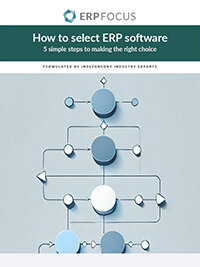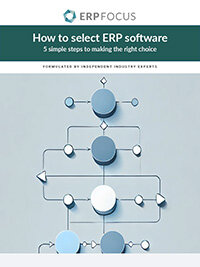When is it time to replace a legacy ERP system?
In answering this question, it’s important to recognize that if you wait until you absolutely need a new ERP system, you’re likely already behind schedule. When organizations delay an ERP upgrade until the last moment, they often end up with rushed, lower-quality implementations or outright failures.
Implementation timelines for an ERP system upgrade
Even a straightforward Tier 3 system upgrade can take about a year to complete properly, while a Tier 1 implementation typically requires around three years, and a complex, multi-country rollout can extend beyond seven years. These timelines reflect full-functionality ERP systems, not just basic accounting packages with limited buy/assemble/stock/sell capabilities.
Why so long?
Some companies implement systems much quicker, but it is also true that over 70% of companies consider their implementations to be a disappointment or an outright failure.
Although multiple factors can contribute, there’s a clear connection: a successful ERP system upgrade demands several critical steps executed thoroughly, including:
- Drafting a comprehensive system design that outlines precise goals and deliverables for the new ERP system
- Reviewing the market to see what is available within the budget
- Shortlisting suppliers and requesting detailed proposals
- Evaluating proposals and scheduling live demonstrations of each ERP solution’s functionality
- Conducting a gap analysis on the preferred system to identify missing features
- Defining necessary customizations and redesigning business processes to address those gaps
- Securing final quotes, checking customer references, and negotiating contracts
- Selecting and interviewing implementation partners who will guide the ERP system upgrade
When to initiate the decision process
Because of these steps, organizations often need to decide on switching ERP systems years before the existing one reaches end-of-life. That requires foresight, but certain triggers can prompt the decision process sooner, even if those triggers sometimes feel subjective.
Vendor end-of-support announcements
When support for your current system ends, running an unsupported ERP becomes a significant risk, driving the need for an ERP upgrade. Similarly, outdated hardware and operating systems can lose vendor support, and the pool of experienced professionals who understand that technology shrinks as talent moves to modern platforms.
Regulatory changes
Another trigger can be forecasted regulatory changes. For instance, when a government transitions from simple sales taxes to VAT (Value Added Tax), older ERP solutions might lack the flexibility to adapt cost-effectively. In those cases, continuing to patch an old system no longer makes sense compared to planning a full ERP system upgrade.
Business growth and transaction volumes
Changes within your business represent another common trigger. Planned growth that increases headcount, transaction volumes, or geographic footprint can push your legacy system past its limits.
If you know your company will open new facilities, expand into e-commerce, or establish foreign subsidiaries, you should factor switching ERP systems into your strategic roadmap long before transaction volumes overwhelm your current solution.
Emerging business paradigms
Lastly, there may be new business paradigms on the horizon, such as increased exposure to e-commerce or the opening of subsidiaries in other countries that will need local language versions of the software that are not currently available.
Advice elsewhere on this website includes the recommendation that the core in-house team for an ERP implementation should never be wholly disbanded but should be retained to ensure that system changes (from everything from upgrades to replacements) can be proactive.
When that advice is taken, the team can periodically reconvene to review the likelihood and impact of the above triggers so that expensive surprises can be avoided.
Free white paper

How to Select ERP
Learn to select your ERP in 5 easy steps by following our expert's advice

Related articles
-

A beginner’s guide to ERP integration
What is ERP integration, why it matters, and more!
-

Secret KPI: Why Your ERP Implementation Team Matters More Than Software
Learn how Godlan ensures successful ERP implementation for manufacturers with proven strategies &...
-

ERP – Is doing nothing an option?
What difference could ERP software make to your organization?

